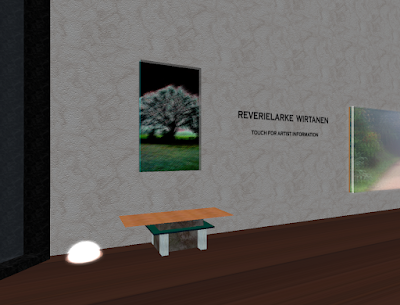
Paintings are artistic expressions that hang on the wall. Sculpture stands in a room or garden, or on a table. And fashion goes onto the body. They are all objects that have been designed for varying combinations of aesthetic, philosophical, practical, and commercial purposes. People argue endlessly about art versus craft, something I found especially irritating when I was an art major in college even while I understood why such discussions should take place.
If anything and everything can call itself art, then meaning is drained from the word and nothing is art, but so-called real art doesn't get a categorical pass into veneration for nobility and purity of purpose. While it may seem loftier to create a painting than throw a pot, it's not necessarily a greater artistic achievement.
Fashion tries to give itself a leg up now and then and associate itself with fine art venues, and conversely, the world of fine art occasionally recognizes the artistic merit of certain elements of the fashion world.
Fashion design work can eventually gain gravitas with time, especially when a given designer has demonstrated some notable combination of innovation, beauty, and technical excellence.
A museum installation of a designer's body of work can be a vivid experience; the museum setting is an aesthetically strong, austere way to see any kind of art, but it is also symbolically validating in that it implies, even confers, importance. Beyond that, it is often the only time a designer's creations over time can be seen as a body of work. The museum show completes the job only begun by the fashion show or store display, the commercial aspects downplayed. The latter venues are concerned with newness and the present moment, but a museum show paradoxically turns away from this central aspect to fashion and considers the passage of time.
Fashion, particularly couture, exists in no small part as an idea. True haute couture is worn by just a few thousand people worldwide, but these visions sit at the top of the pyramid and illuminate the broader realms of fashion and accessories. And while this rarified world is directly experienced by a small group of enthusiasts, it enjoys a vivid life in the world of print. The media is where everything is validated, where fame and celebrity and importance happens in popular culture.
A design is first an idea, then a creation at the hands of craftspeople, then presented in an artistic venue viewed by a select group, versions of the garment eventually worn by a few people. At each stage of the process it is shared via the media with a greater number of people: a fashion layout in a magazine; someone wearing the fashion at an event. The event is photographed, or taped and shown on YouTube. The work is appreciated, assimilated, imitated, and meditated upon in countless ways. A diverse array of art and design and innovation happens at every level, folding back on itself again and again.
Vionnet conjuring true innovations with fabric cut on the bias; Schiaparelli's playful surrealism; the luxurious brilliance of Paul Poiret; Coco Chanel and her breakthroughs in modern suiting: all were appreciated in their day. But in time, the signal-to-noise ratio shifts; fashion designs become artifacts-- even art-- when viewed and appreciated in perhaps a fuller way by historians and cultural anthropologists. In this age of media and information, the cycle time of this process is growing shorter.
With only so much room at the proverbial top, there will always be artists and designers of merit who go relatively unrecognized in the big picture. This state of affairs does not mean their works are artistically less valid, and it doesn't mean anything unfair or nefarious is going on, or needs to change. There will always be artists and designers who achieve various forms of success while not necessarily being the best of the best. Enthusiasts are free to inquire into varying levels of fashion obscurity: we can dig for vintage clothing, investigate designers working in smaller markets. We can form our own opinions and champion our own choices.
One of the most fascinating aspects to all this is the cross-referencing of various media.
to be contined


















